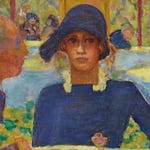Ariane motioned to the young architect to join her in the living room, and there they continued their discussion, while Bud, who remained in the kitchen, continued his discourse on the evolution of the functions of rooms in suburban homes: “Now, we didn’t have family rooms when I was a kid,” he said, pulling a stool out from the kitchen counter and perching on it as he had seen a comedian do on television. “We had a parlor, but you know how it was: God forbid you should ever go in there unless Rich Uncle Tomaso and Aunt Louise were visiting. We never called him just plain Uncle Tomaso; it was always Rich Uncle Tomaso. My father used to c all them Rich Uncle Tomaso and Poor Aunt Louise.”
He got a chuckle for that. In some cases, and Bud’s was one, that’s all it takes. He was hooked. (In later years, after polishing his act as a featured attraction of the annual Babbington Founders Festival, he became the host of the pioneering do-it-yourself program “If I Had a Hammer,” which was broadcast for eleven consecutive seasons, every Sunday morning at 5:30, just after the national anthem and “Mother Matuta’s Thought for the Day” on Babbington’s own WCLM, Channel 6.
“But that’s another story,” Bud said. “We’re talking about family rooms. So the family room was really a way of providing a room that combined the functions of—I don’t know, I guess the parlor and the cellar, or the attic, or wherever people used to feel comfortable before they had family rooms. Wherever the family could put their feet on the furniture—”
“He is right,” the unflappable Derek said to Ariane. “Most rooms do have more than one function nowadays. And in your case, your rooms all have another function—well, at this point only some of them do, but soon they all will—as display cases for you, or, if you prefer, as stages for you.”
“Uh-huh.”
“So the current arrangement of these rooms doesn’t really acknowledge this new use that you’ve put them to. The traditional uses imply a kind of arrangement of the spaces, based in part on functionality and in part on privacy—a notion completely alien to what you’re doing here. So I suggest that we acknowledge what you’re doing and rearrange the spaces, turn them outward, open them up. Like this.”
While she watched, he sketched a number of rooms slightly disconnected from one another, thrusting toward the audience, so that Ariane and her house would seem to offer themselves for viewing from every angle. In his sketch there were no walls at all, and the rooms were connected by ramps and steps that made it possible to move among them in surprising ways unlike the movement in a normal house.
“You know,” he said, working, not looking at Ariane, “the English philosopher Jeremy Bentham devised a plan for a prison based on the idea of keeping the prisoners always on view, sort of the way you are, but in a way the reverse.”
“Mmm?” said Ariane, who was beginning to think about how long the architect might stay.
“Bentham called it a panopticon,” he said, “ meaning that every part of it could be viewed from a single point. Actually, that wasn’t the case in the building as it was finally designed. It was more on the model of a tower, with a central core from which the guards could view all the prisoners on any floor from a single central point on that floor. Let me show you.”
“Mmm,” said Ariane.
Derek tore from his sketchbook the sheet on which he had sketched Ariane’s future house and began sketching, on a clean sheet, Bentham’s panopticon.
“The prisoners would be constantly on display,” Derek explained, “continually under surveillance. They would live in tiers of cells arranged around a central core, the guards would occupy the core, and each prisoner in his cell would be visible from the core at any time. There would be no privacy. No place to hide. As punishment, society would have taken from the prisoners not merely their freedom of movement but their privacy.”
“Do you like spaghetti?” asked Ariane.
“Sure.”
“Will you stay for dinner?”
“That’s hours away.”
“We have a lot of work to do, don’t we?”
“Well, yes, we do—and I guess that if I stayed, I could sketch the whole thing out for you. Then Bud—”
They both glanced at Bud, who was explaining how manufacturers of laminated plastic wall paneling achieved such uncanny imitations of wood grain.
“—Bud could get started next week.”
“Great,” said Ariane.
The sketches were finished before dinner. They finished eating at eight. Derek left in the morning.
[to be continued]
Have you missed an episode or two or several?
You can begin reading at the beginning or you can catch up by visiting the archive or consulting the index to the Topical Guide. The Substack serialization of Little Follies begins here; Herb ’n’ Lorna begins here; Reservations Recommended begins here; Where Do You Stop? begins here; What a Piece of Work I Am begins here.
You can listen to the episodes on the Personal History podcast. Begin at the beginning or scroll through the episodes to find what you’ve missed. The Substack podcast reading of Little Follies begins here; Herb ’n’ Lorna begins here; Reservations Recommended begins here; Where Do You Stop? begins here; What a Piece of Work I Am begins here.
You can listen to “My Mother Takes a Tumble” and “Do Clams Bite?” complete and uninterrupted as audiobooks through YouTube.
You can ensure that you never miss a future issue by getting a free subscription. (You can help support the work by choosing a paid subscription instead.)
At Apple Books you can download free eBooks of Little Follies, Herb ’n’ Lorna, Reservations Recommended, and Where Do You Stop?
You’ll find overviews of the entire work in An Introduction to The Personal History, Adventures, Experiences & Observations of Peter Leroy (a pdf document), The Origin Story (here on substack), Between the Lines (a video, here on Substack), and at Encyclopedia.com.












